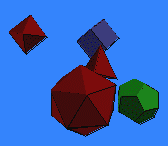
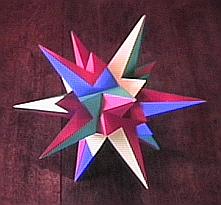
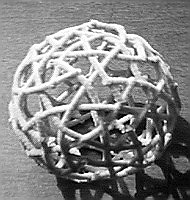
Here is a more recent, more detailed set of instruction.
After making these in the suggested size, some classes have made these in very large sizes, using a sheet of cardboard for each component.

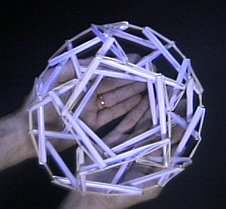
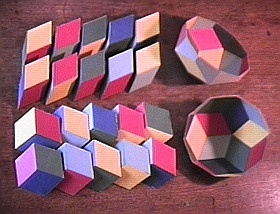
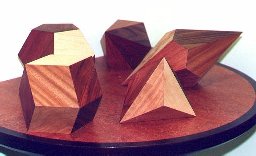
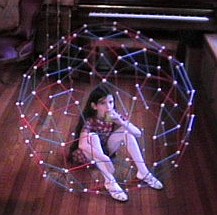

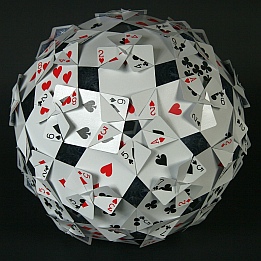
If you are a teacher, I strongly recommend you try any project by
yourself
or with an individual student before having the whole class do it, so
you'll
understand the process and have a model to illustrate a possible final
result.
| Certainly, the first activity is to make paper or cardboard models of the Platonic solids. Use either a glue or tape method of assembly. I've written some ideas and instructions, but you are better off with one of the books (e.g., by Wenninger) that give detailed step-by-step instructions. Hang them up on strings---individually or as a mobile---for everyone to see. |  |
| More complex paper or cardboard models are one way to go next. Scan through my Virtual Polyhedra pages for something you like, and then figure out how to make it. Maybe try modular origami. |  |
| Other media,
such as pipe
cleaners, toothpicks
and gumdrops, or toothpicks and mini-marshmallows, are only limited by
your imagination. I know of high-school classes which have made
stained-glass
polyhedra and large outdoor pipe polyhedra. |
 |
| "Slide-togethers" are a different type of paper
construction related to
polyhedra. They are relatively fast and easy to make, and usually don't
require glue. I have written examples
and
instructions. Here is a more recent, more detailed set of instruction. After making these in the suggested size, some classes have made these in very large sizes, using a sheet of cardboard for each component. |
 |
| Tensegrity structures made of soda straws and rubber bands are another fun activity. I've written some detailed instructions. |  |
| Make the color-matching dissection of the rhombic triacontahedron into twenty rhombohedra. I've written some instructions for this beautiful but little-known model. |  |
| In a wood shop or technology class, you can easily make wooden polyhedra models. Instructions are summarized here. |  |
| Plastic construction sets provide faces or edges with which to build. If you are lucky enough to have my favorite, the Zometool kit, you can make some really nifty structures. Some ideas and examples are shown here. The Zome Geometry book gives detailed instructions. |  |
| Paper models of Orderly Tangles
are more challenging than they look. There are some detailed
instructions here. |
 |
| Here's
a construction with playing cards. It is related to the Slide
Togethers, above, which should be done first. |
 |